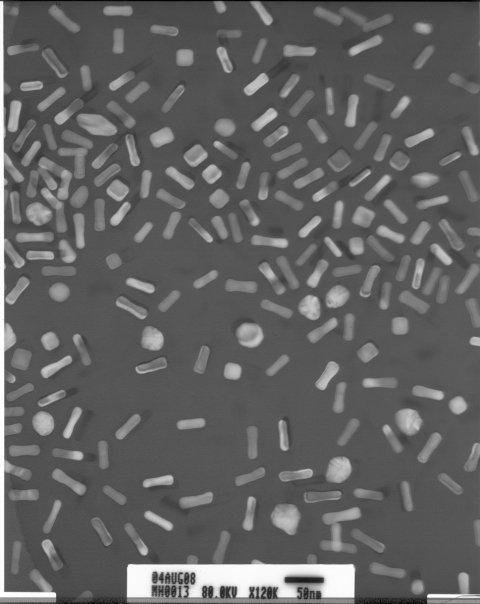Researchers studied nanoparticles, which are ten thousand times smaller than the head of a pin, as a way to a way to deliver an oral dose to targeted areas. Photo by
Idistrust/Wikimedia Commons
Aug. 8 (UPI) -- Researchers believe they have figured out a way to use nanoparticles as a way to deliver oral medication, including an insulin pill to control diabetes.
Nanoparticles, which are ten thousand times smaller than the head of a pin, were studied as a way to deliver an oral dose to targeted areas. The findings at the University of Utah Health were published Wednesday in the journal ACS Nano.
"In the pharmaceutical world, this has been regarded as the holy grail," senior author Dr. You Han Bae, a professor pharmaceutics and pharmaceutical chemistry at Utah, said in a press release.
In nanomedicine, tiny particles are used to carry drugs to treat a variety of conditions, including cancer. They are commonly given intravenously, because solid nanoparticles don't absorb in a proper amount in the body.
That includes insulin, which does not survive conditions of the gastro-intestinal system and cannot easily cross the GI wall.
The Utah researchers modified the surface of nanoparticles with glycocholic acid, which is a bile acid that helps the body absorb fat in the small intestine.
The acid allows the nanoparticles to slip unrecognized through the lining of the small intestine.
In preliminary testing, this coating helped the nanoparticles bind to proteins to move into the gut lymphatic system where it can access the bloodstream.
"Nanoparticles were not expected to be absorbed through the lymphatic system," first author Dr. Kyoung Sub Kim, a post-doctoral research assistant in Bae's lab. "Lymphocyte delivery of nanoparticles allows a wide range of medicines to be applied through this method."
The researchers fed rodents oral nanoparticles in two sizes -- 100 or 250 nm -- at doses ranging from 1 to 20 mg/kg. The larger nanoparticles were not less well absorbed but did not affect the uptake of nanoparticles into the body, the researchers found.
In their study, the researchers used polystyrene nanoparticles, which that are not appropriate for clinical use because they not dissipated or excreted from the body.
It takes about one to 10 hours for the nanoparticles to appear in the bloodstream, Bae said.
Without their method, 7 percent of nanoparticles were absorbed and entered the blood stream. But with the new technique, it increased seven-fold.
"This is basic research with broad future applications," Bae said. "Our work is a stepping stone."















